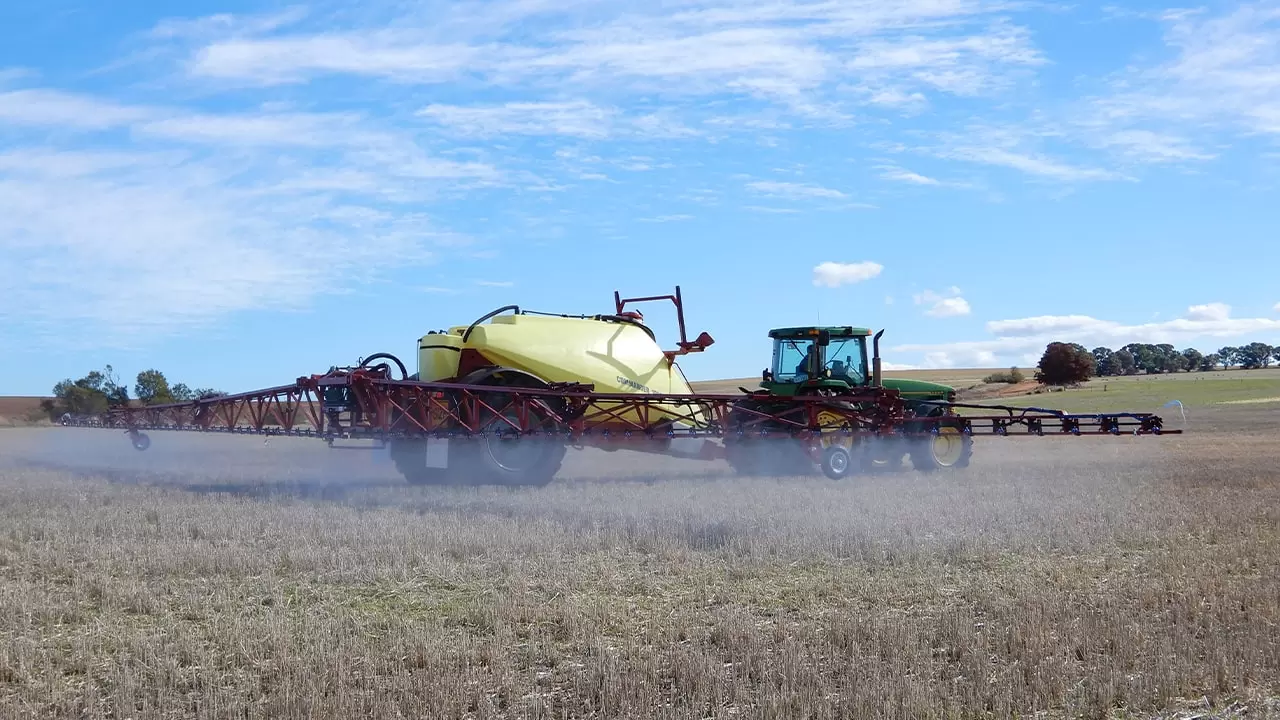Stop Spray Drift
Spray drift is the movement of spray particles beyond the target area, which can result in unintended effects such as crop damage, environmental contamination, and human health risks. Minimising spray drift is crucial in agriculture because it can help to ensure effective and efficient application of pesticides, reduce the risk of off-target damage, and protect the environment and human health.
Here are some specific reasons why minimising spray drift is important in agriculture:
- Preventing crop damage: Spray drift can damage crops, especially sensitive ones, resulting in reduced yields or even complete crop loss.
- Reducing environmental contamination: Pesticides that drift beyond the target area can contaminate soil, water, and air, which can have harmful effects on the environment and wildlife.
- Protecting human health: Pesticides can pose a risk to human health, especially when they are applied in areas where people live, work, or play. By minimising spray drift, farmers can reduce the risk of pesticide exposure to themselves, their families, and their neighbours.
- Efficient use of pesticides: Minimising spray drift can help farmers ensure that they are applying the correct amount of pesticide to the target area, which can save them money and reduce the risk of over- or underuse.
- Increase spray days: Using drift reducing technologies means farmers can spray on less favourable days
Minimising spray drift is crucial in agriculture because it can reduce the risk of herbicide resistance.
Overall, minimising spray drift is essential for sustainable agriculture that protects the environment, human health, and crop productivity.

HARDI’s TWIN system uses air streams to direct the spray to the target, reducing drift and increasing crop penetration and coverage.

Spray drift is the movement of spray particles beyond the target area.
Below are some of the steps related to sprayers farmers can take to minimise spray drift.
1. Maintain equipment: Regular maintenance of equipment is essential to ensure proper functioning and minimize the risk of spray drift. Broken or damaged nozzles or equipment can lead to uneven application and increase the potential for drift.
2. Use the correct nozzle: Use nozzles that deliver the coarsest possible droplet size while still ensuring efficacy of the product. Always follow the product label for instructions. HARDI has the world’s largest ISO nozzle program for agriculture, horticulture (including most vegetables), viticulture as well as many more specialist needs.
HARDI is the only sprayer manufacturer with a full range of its own nozzles.
3. Consider boom height and stability: The best boom height depends on a few factors such as type of crop, nozzle type, and the chemical being applied. Once the optimal height of the boom is determined, it is critical that the boom stays at this height. HARDI’s AutoHeight or AutoTerrain ensure that the correct distance is maintained under all circumstances.
4. Use drift reducing technologies : HARDI’s TWIN system uses air streams to direct the spray to the target, reducing drift and increasing crop penetration and coverage. TWIN FORCE can reduce drift by an astounding 80%.
There are many more steps farmers can take to reduce drift.
Grains Producers SA have recently launched a new campaign ‘Keep Your Droplets to Yourself’ which is aimed at educating grain (and other crop) producers about the importance of reducing spray drift. For a full overview, download the factsheet here
